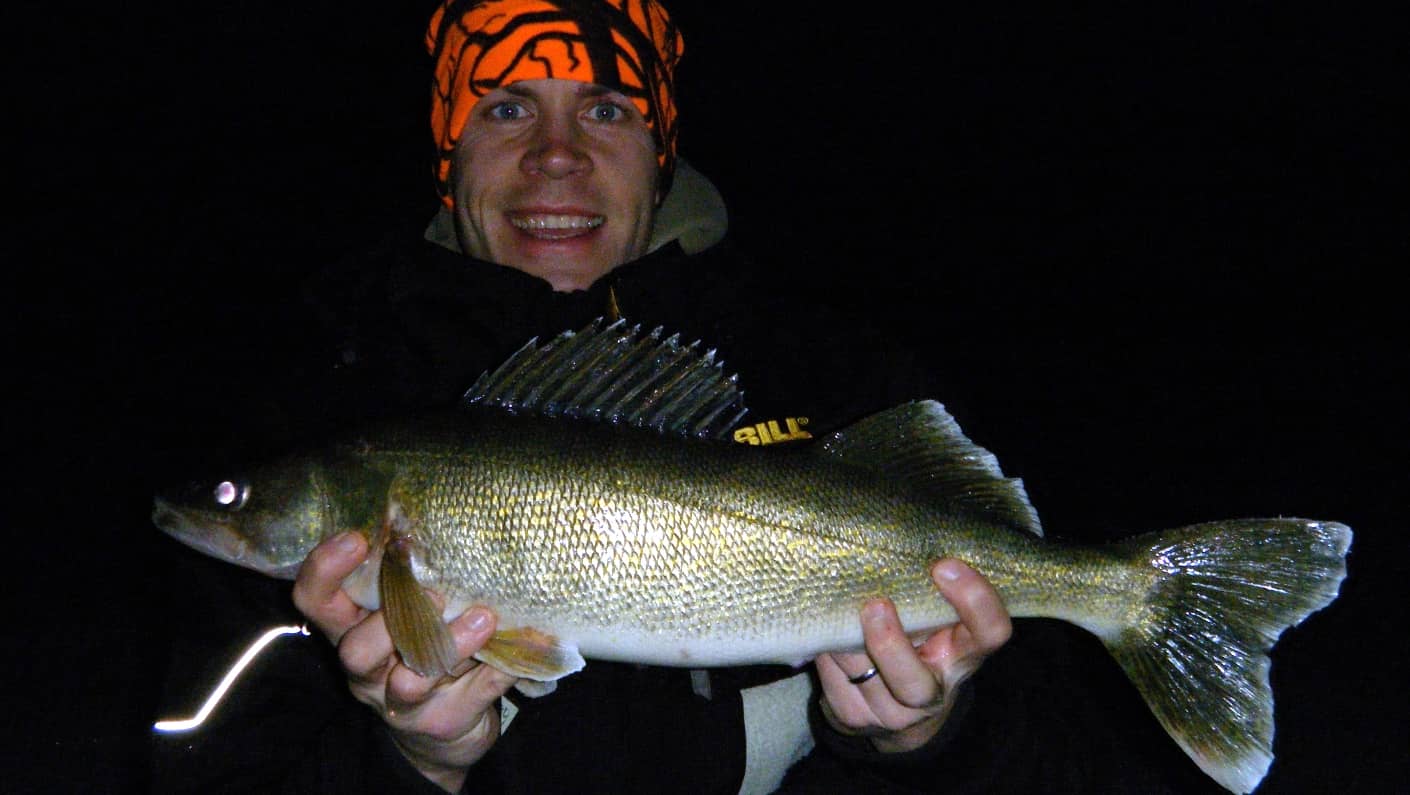
Anglers have been catching fish through the ice with top-of-the-line technology, and without any electronic assistance for decades. How you pursue your favorites comes down to personal choice under the ever-rising ceiling of what’s available. Simonson Photo
By Nick Simonson
While shooting the breeze in between rounds of trap this fall, one shooter explained his use of livescope sonar under the ice last season to pick off schools of perch on a favorite water we both shared throughout much of our winter fishing time. He’d simply drill the holes, drop the transducer, spin it around and find the pods of roving perch in the basin. Then he’d move in the general direction of the school, punch another hole, and catch a handful before they moved on, repeating the process once things got quiet until he had his limit of 10-to-12-inch footballs on the ice.
In discussing the evolving art of muskie fishing as the season wrapped with the snow in November, my brother detailed a similar tactic utilized by the cadre of anglers seeking out the fish of 10,000 casts. Simply locate a behemoth in real time, and, as he described it, “just keep bonking them on the head with plastic” until they bite, watching for any reaction on the real-time monitor. With accurate displays and the ability to size up such a fish, muskie anglers can know almost to the inch how big the fish is before they set up on it and get down to the business of bonking.
Technology like this represents the continued upward rise of the ceiling that contains what’s possible in the outdoors. While watching Jaws over the Thanksgiving holiday weekend, I laughed as Chief Brody tried to make sense of the 1970s-style Lowrance display on Hooper’s shark-searching boat. The ceiling has come a long way up since those simple cameras and sonar on the Hollywood craft were top-of-the-line. Together, these changing options under the ice and on open water, allowing for real-time viewing of what’s happening and where the fish are have made fishing easier from just 10 or 20 years ago. For some, it’s gotten to the point where such options and top-end sonar offerings feel like cheating.
I’m sure many thought the same when the first underwater cameras came about for the ice angling crowd in the early 2000s, or when the first Vexilar became commercially viable in the 1990s and people suddenly could see that fish were swimming down there beneath their hole. Were these advantages over the previous generation of anglers on hardwater who basically had nothing but a lead depth checker to set their lines? Absolutely. Was that advantage unfair? That’s up for debate along with the advantages provided by their successors in fishing technology.
The sliding scale of ice fishing history would likely say no, and I’d tend to agree even with the modern options available with their real time displays that show almost to the scale what kind of fish are around and where they’re located. Ice fishing is hard enough – the combination of cold, wet conditions, and often the winds of winter add a challenge absent from summer fishing – and some species, such as muskies are difficult to catch just by their nature, even on the nicest summer day. Any advantage on the water is a good one to have, and the moment it feels like it’s unfair, the angler has the option to discontinue the use of that technology.
The neat thing about a ceiling – both literally and figuratively – is that you don’t have to reach up and touch it every day to confirm its presence. It’s there, and its nice to know it exists, but you don’t have to think about it. When openwater fishing is hot, and walleyes are jumping in the boat or smallmouth are on the bite, it doesn’t take much more than a quick glance at a sonar readout to reaffirm what’s going on or stay in position. When the perch are hungry under the ice, or a school of bluegills is stacked up against a fading winter weedline, simply watching the rod tip is the only display required. In all aspects of angling, technology remains an option – not a requirement. For those with the financial wherewithal to spend a couple thousand dollars on the latest on-ice sonar (which pulls double duty on a summertime boat as well), the ceiling is a bit higher. For those who can’t or don’t want to or see such an advantage as being unfair to the fish, they have the option of making that decision which aligns with their angling tactics, their ethical code, and the way they want to experience things…in our outdoors.
